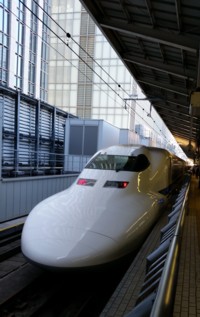More Images of Japan
Follow this link to see the entire album: Click Here...
We have 131 guests and no members online

In February 2011 we travelled to Malaysia. I was surprised to see modern housing estates in substantial numbers during our first cab ride from the Airport to Kuala Lumpur. It seemed more reminiscent of the United Arab Emirates than of the poorer Middle East or of other developing countries in SE Asia. Our hotel was similarly well appointed.
Back in the mid 1960's when I was at university and still living at home with my parents in Thornleigh, two dark suited, white shirted, dark tied, earnest young men, fresh from the United States, appeared at our door.
Having discovered that they weren't from IBM my mother was all for shooing them away. But I was taking an interest in philosophy and psychology and here were two interesting examples of religious fervour.
As I often have with similar missionaries (see: Daniel, the Jehovah’s Witness in Easter on this Website), I invited them in and they were very pleased to tell me about their book. I remember them poised on the front of our couch, not daring or willing to sit back in comfort, as they eagerly told me about their revelation.
And so it came to pass that a week ago when we travelled to Melbourne to stay with my step-son Lachlan and his family and to see the musical: The Book of Mormon I was immediately taken back to 1964.
Now that every adult in my extended family is vaccinated is my family safe from Covid-19?
The short answer is no. No vaccine is 100% effective. Yet, we are a lot safer.
It's a bit hard to work it out in Australia as, although we are familiar with lockdowns, we have so little experience with the actual disease.